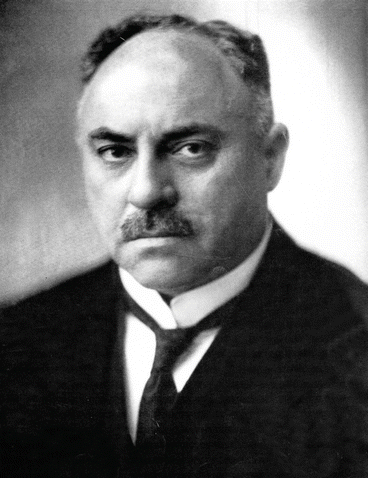(1)
Department of Plastic Surgery, University Hospital Leiden, Leiden, The Netherlands

Jacob Levin Joseph was born in Konigsberg, Prussia, on 6 September 1865, but the city’s name is now no more than a spectre, which rises from the mists of history, for it was renamed Kaliningrad in 1945, when it was ceded to the Soviet Union. Joseph was the youngest of three children, and his father, Israel Joseph, was a Rabbi who naturally brought his offspring up according to the Jewish faith.
At the age of 14, young Jacques Joseph, as he later preferred to be known, was sent to the Sophien Gymnasium in Berlin to further his education. After his schooling had been completed, he embarked on the study of medicine at the Friedrich Wilhelm University in Berlin, from which he received a certificate in 1890. This was not a formal M.D. degree, but according to his widow, his M.D. was granted by the University of Leipzig. Unfortunately, it has never been possible to resolve the question of the origin of his degree, since part of the archives at Leipzig were destroyed during the Second World War.
For a short while, following graduation, Joseph worked with Neumann at the Children’s Clinic in Berlin, before setting up in private practice in 1891. One year later, he became an assistant to Professor Julius Wolff at the University Orthopaedic Clinic in Berlin. In 1896, to the surprise, nay, horror, of the hospital dignitaries, word reached them that Joseph had apparently taken leave of his senses and operated upon a small boy to correct his protruding ears!
In life, there will always be some insensitive individuals who consider the common facial features, such as ‘bat ears’, to be of no significance, but Joseph and his little patient were of another persuasion. Despite a scientific publication on his method of otoplasty, the fury of the university committee was not to be assuaged, and Joseph was dismissed from his post.
In order to provide for his family (Joseph had married in 1893 and had one daughter Bella), he worked for 2 years as a general practitioner. In 1898, his life changed as the result of the visit of a young man who asked Joseph if he could reduce his large and ugly nose!
Far from daunted by the ruins of his academic career, Joseph withdrew to the serenity of the morgue, where he worked out a plan of campaign upon a cadaver’s nose, ignorant of the four stage nasal correction already published by Weir. Eight days later, he felt confident enough to put his operative technique to the test on the hawk-nosed patient, who not only survived the experiment but also appeared as delighted as Joseph with the result. Joseph was moved to publish this technique in the same year, and so the foundations were laid of his future fame. The successful operation was reported to the Berlin Medical Society in May 1898, and from then on, his interests began to centre more and more upon corrective ‘cosmetic’ surgery. It was not until 1904 that he reported his experience with intranasal incisions for rhinoplasty, and 1 year later, he was able to publish an account of his technique, which had been used with success on more than 100 patients.
Stay updated, free articles. Join our Telegram channel

Full access? Get Clinical Tree








